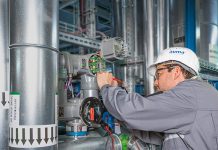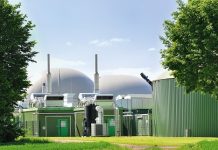An inspection team from James Fisher NDT Ltd. was contracted by a major water infrastructure business to carry out a full visual inspection of the internal aspects of an underground service reservoir, made up of two 7.945ML tanks.
The purpose of the inspection was to validate and update details, and historical records held by the Asset Management Team, following a previous inspection; which had highlighted a number of Health & Safety Concerns relating to the load bearing capability of the roof and supporting pillars.
Due to these structural concerns, the tank had been deemed unsuitable for a “manned confined space entry inspection”. This was based on information gathered during a previous inspection, when damage had been noticed in a number of areas of the roof. Throughout the initial discussion phase, the proposal of using a joint UAV and ROV inspection was made, keeping the in-service side of the reservoir active and filled with water; utilising a swimming ROV, and operating a flying UAV on the out of service dry side. This completely removed the need for personnel to be put at any risk accessing the reservoir to carry out a conventional visual inspection.
To carry out the survey, the decision was taken to fill the wet side of the reservoir to around 95% capacity. This allowed the Swimming ROV to get closer to the roof structure, and inspect the top level supports. These could then be videoed, utilising an upwards facing fixed camera, mounted on the top of the ROV Control Housing. The forward facing manoeuvrable camera was utilised to carry out the more conventional subsurface video of the tank walls, floor, and the submerged support pillars.
The out of service side of the tank was left dry, to allow for the Elios UAV to operate, and carry out a full inspection of floors walls and ceilings, similar to the ROV Inspection. The advantage of the Elios UAV is that it is ideally suited to working in confined spaces due to its compact size, precise manoeuvrability and collision resistant cage. Its multi axis gimbal system, also allowed the Elios UAV to safely make contact with the internal aspects of the tank and ‘roll’ up, down, and across surfaces to give close up imagery of areas that simply would not be possible with most other UAVs.
During the inspection, the visible condition of the internal walls, floor, roof, and supporting pillars were examined, with particular attention paid to any areas where damage and concrete spalling had been seen previously. The UAV and ROV team were then able to produce a series of video files, which allowed the client and their Alliance Partners to formulate a comprehensive report on the general condition of the reservoir tanks and present their recommendations for remedial work that might be needed.
The videos produced by the UAV and ROV combination allowed for on-site review of the assets immediately following the inspection of both the Wet and Dry sides of the Reservoir. This highlighted an apparent degradation in the overall condition, since the initial survey was carried out. This assumption was further re-enforced by the increased volume of concrete spalling debris, which was visible in a number of locations on both sides of the reservoir. The survey also identified a large volume of air bleed in to the structure but this was of lesser concern than the structural degradation.
The UAV and ROV, working in combination, have proved to be valuable tools in determining the condition and viability of this hard to reach structure; and whereas this kind of survey gives a strong indication as to condition, whilst vastly reducing the cost and risks associated with human access, there is still a need to have the areas of most concern, subject to a full structural substantiation survey.
www.jfndt.co.uk





